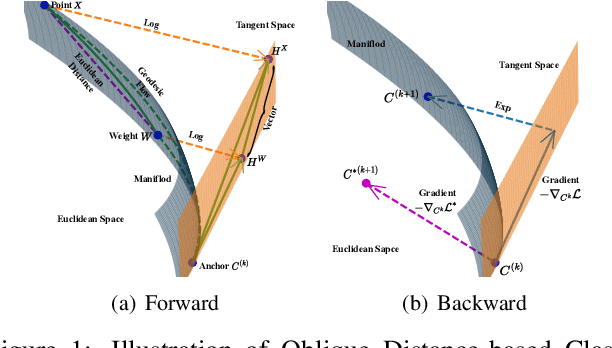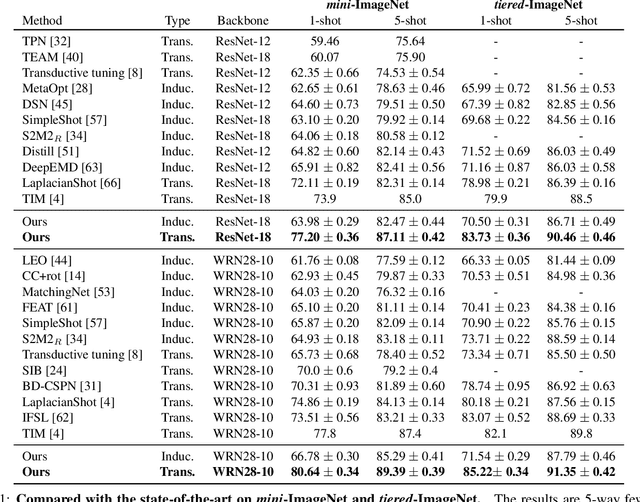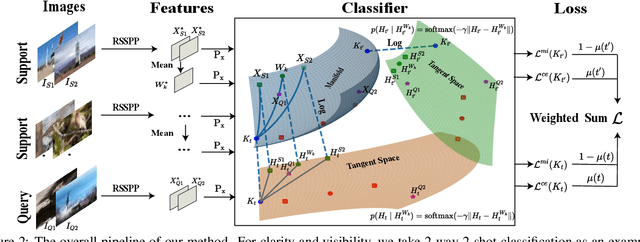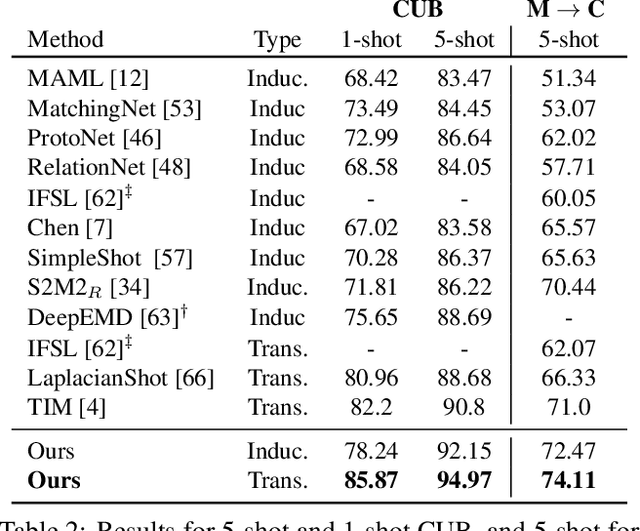Guodong Qi
CMVAE: Causal Meta VAE for Unsupervised Meta-Learning
Feb 20, 2023Abstract:Unsupervised meta-learning aims to learn the meta knowledge from unlabeled data and rapidly adapt to novel tasks. However, existing approaches may be misled by the context-bias (e.g. background) from the training data. In this paper, we abstract the unsupervised meta-learning problem into a Structural Causal Model (SCM) and point out that such bias arises due to hidden confounders. To eliminate the confounders, we define the priors are \textit{conditionally} independent, learn the relationships between priors and intervene on them with casual factorization. Furthermore, we propose Causal Meta VAE (CMVAE) that encodes the priors into latent codes in the causal space and learns their relationships simultaneously to achieve the downstream few-shot image classification task. Results on toy datasets and three benchmark datasets demonstrate that our method can remove the context-bias and it outperforms other state-of-the-art unsupervised meta-learning algorithms because of bias-removal. Code is available at \url{https://github.com/GuodongQi/CMVAE}
GraftNet: Towards Domain Generalized Stereo Matching with a Broad-Spectrum and Task-Oriented Feature
Apr 01, 2022



Abstract:Although supervised deep stereo matching networks have made impressive achievements, the poor generalization ability caused by the domain gap prevents them from being applied to real-life scenarios. In this paper, we propose to leverage the feature of a model trained on large-scale datasets to deal with the domain shift since it has seen various styles of images. With the cosine similarity based cost volume as a bridge, the feature will be grafted to an ordinary cost aggregation module. Despite the broad-spectrum representation, such a low-level feature contains much general information which is not aimed at stereo matching. To recover more task-specific information, the grafted feature is further input into a shallow network to be transformed before calculating the cost. Extensive experiments show that the model generalization ability can be improved significantly with this broad-spectrum and task-oriented feature. Specifically, based on two well-known architectures PSMNet and GANet, our methods are superior to other robust algorithms when transferring from SceneFlow to KITTI 2015, KITTI 2012, and Middlebury. Code is available at https://github.com/SpadeLiu/Graft-PSMNet.
Transductive Few-Shot Classification on the Oblique Manifold
Aug 09, 2021



Abstract:Few-shot learning (FSL) attempts to learn with limited data. In this work, we perform the feature extraction in the Euclidean space and the geodesic distance metric on the Oblique Manifold (OM). Specially, for better feature extraction, we propose a non-parametric Region Self-attention with Spatial Pyramid Pooling (RSSPP), which realizes a trade-off between the generalization and the discriminative ability of the single image feature. Then, we embed the feature to OM as a point. Furthermore, we design an Oblique Distance-based Classifier (ODC) that achieves classification in the tangent spaces which better approximate OM locally by learnable tangency points. Finally, we introduce a new method for parameters initialization and a novel loss function in the transductive settings. Extensive experiments demonstrate the effectiveness of our algorithm and it outperforms state-of-the-art methods on the popular benchmarks: mini-ImageNet, tiered-ImageNet, and Caltech-UCSD Birds-200-2011 (CUB).
 Add to Chrome
Add to Chrome Add to Firefox
Add to Firefox Add to Edge
Add to Edge